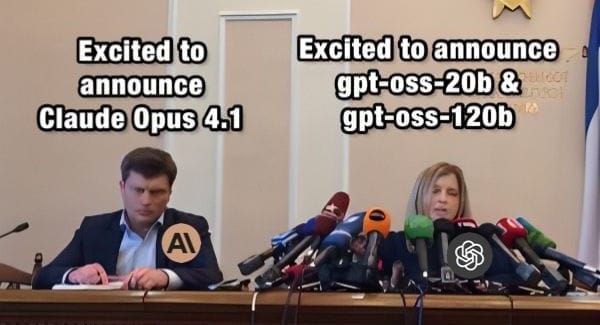Why Did OpenAI Just Open-Sourced Two Models?
Seriously why ?
Earlier this week on Tuesday the 5th, OpenAI released two open-source models [1], gpt-oss-120B and gpt-oss-29B. And honestly? It made me wonder. What's the point for OpenAI to release models like these when they've spent hundreds of millions of dollars training them? Especially when their entire business model revolves around selling monthly subscriptions and billing API calls?
Building Freemium Funnel ?
First thing to note: OpenAI hasn't released their top-tier models. We're not getting the GPT-4.x versions here. These open-source models are significantly less powerful than what they're keeping behind the paywall.
My first thought was that OpenAI might be trying to build a freemium funnel. Developers and companies could start with these open-source models, build workflows, and eventually hit their limitations.
At that point, they're looking for better accuracy, higher performance, and hosted infrastructure, so they upgrade to paid products. Congrats, you've just acquired new customers!
Still, I wasn't fully convinced. It's relatively easy to build a workflow around one model and then switch to another. Calling a different LLM via API is quite transparent, so there's no guarantee that people will convert to your ecosystem. So what else could be going on?
Seeking Attention?
Another angle: they want the spotlight.
In the age of hype cycles and constant VC attention, controlling the narrative matters. Just look at Sam Altman's recent tweets on X if you have any doubt left. If you're not seen as innovating, you're falling behind. It's a page straight out of the Chinese AI labs' playbook: maximize perceived impact with limited resources.
OpenAI is already one of the most well-known companies in the generative AI space, thanks to its pioneering work. But the competition is fierce, and public perception is beginning to shift, some think they're falling behind. Using GPT-5 as a kind of mirage for an incoming revolution has its limits, and they're clearly stalling for time.
Also worth noting: OpenAI is currently looking to raise employees shares at a $500 billion valuation. A splashy open-source release helps generate buzz, attract attention, and keep the hype alive. It might also give employees an opportunity to sell some of their stock at a premium price, making them less tempted by poaching offers from competitors (hi, Zuck).
Competitive Disruption
And then there's the competitive angle.
By open-sourcing models that are just good enough, OpenAI could be undercutting smaller companies and research labs that are investing serious effort in training medium-sized models. Why pay for access to a mid-tier API or fund your own compute-heavy training run when OpenAI just dropped two solid checkpoints for free?
This could squeeze out smaller competitors in the "good-enough" LLM space, leaving only the biggest players standing at the top.

Or maybe it was just a move to overshadow the release of Claude Opus 4.1 [2], as both announcements were made on the same day.
So... Why?
Well, I'm still not sure, but probably a mix of everything. My main theory is the fear of falling behind as OpenAI teams are getting exhausted and heavily poached by fierce competition.
Is it generous? Of course not. Is it calculated? Absolutely, we are discussing a company that wants to shape the future of humanity and become one of the future GAFAM.
Member discussion